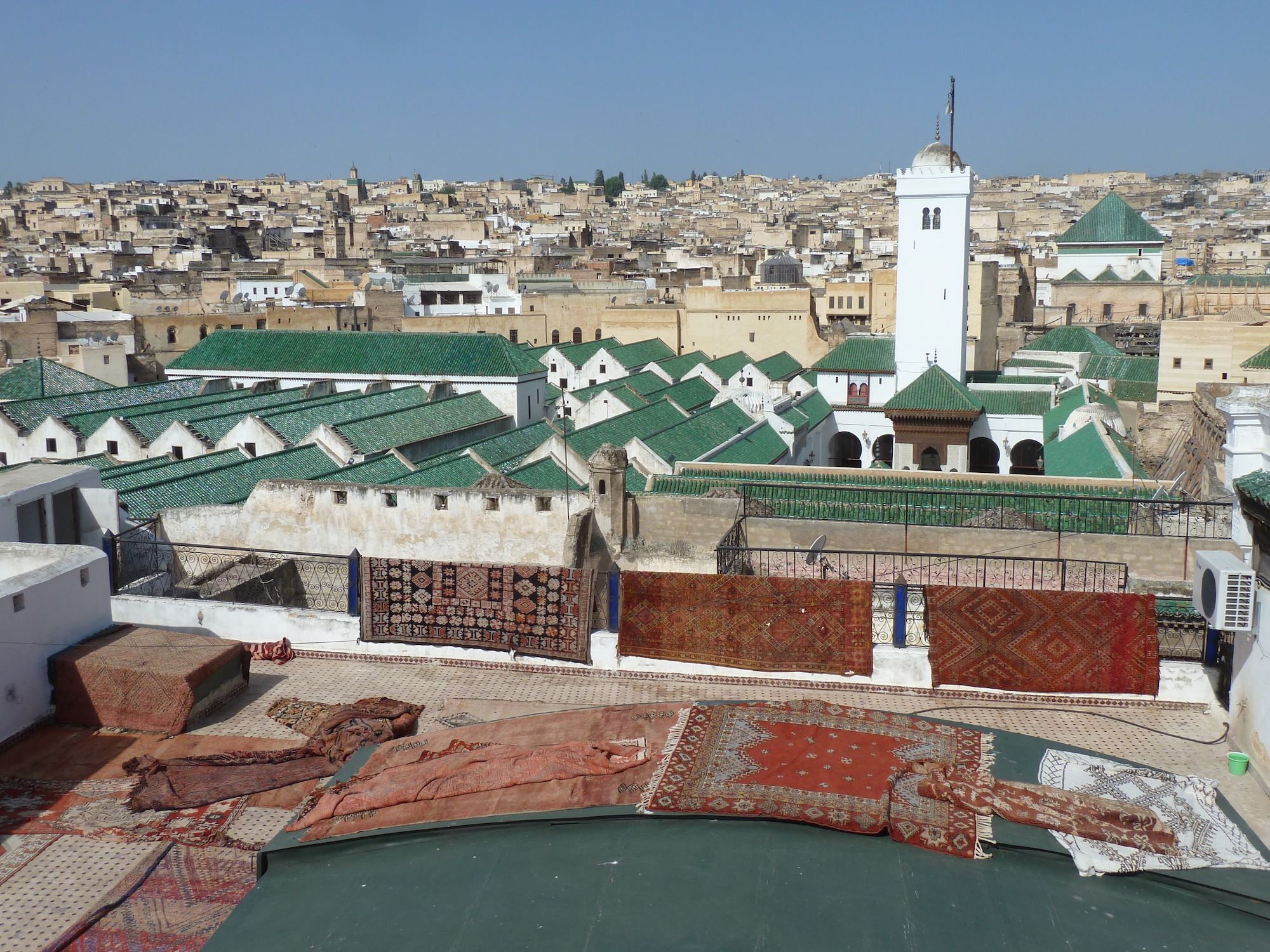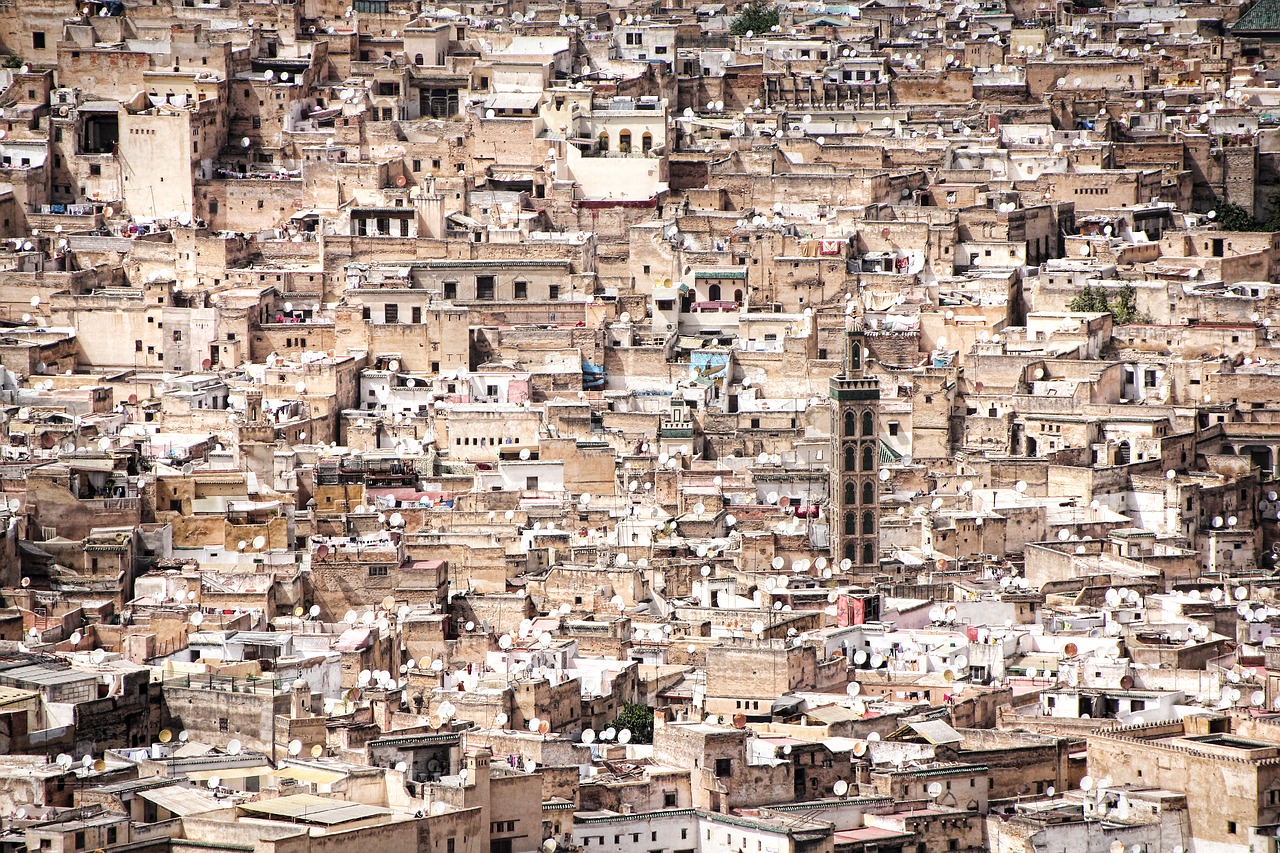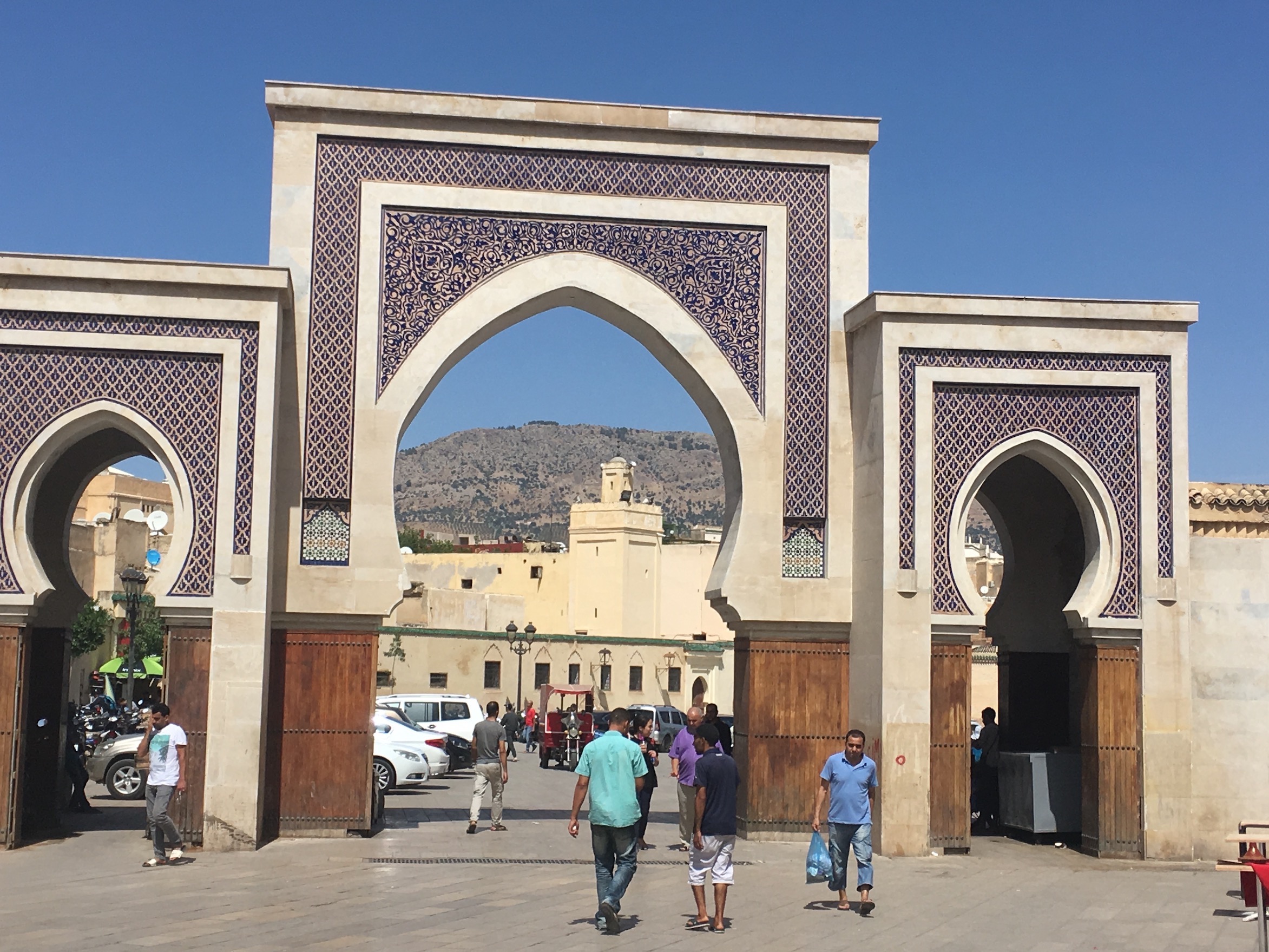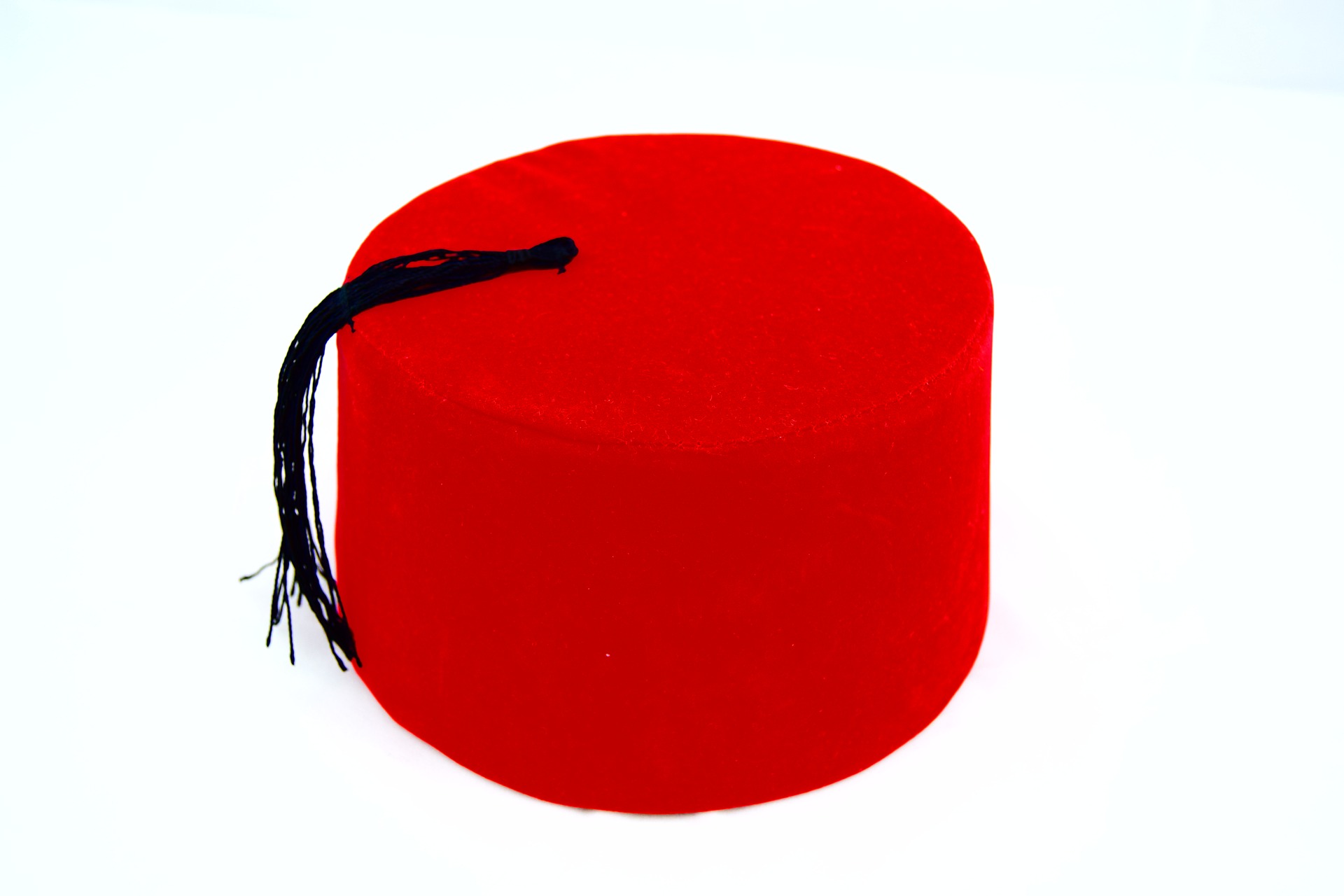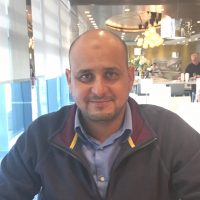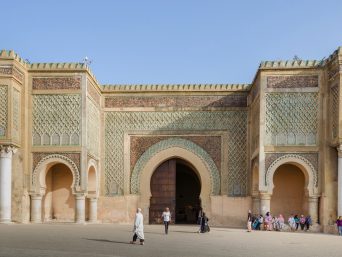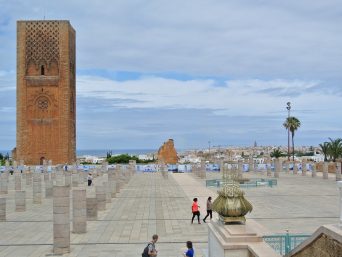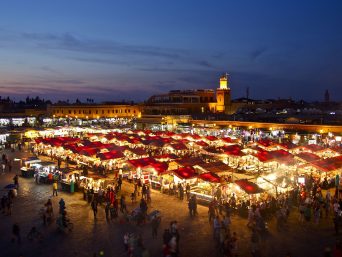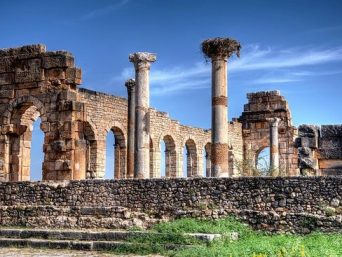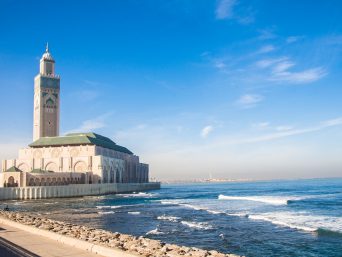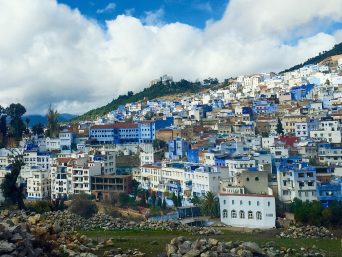Epic journeys
Tour Overview
Fes is another most impressive Imperial City
A Fes City Guide will be with you for ½ a day (included). Discussion will take place as to what places you particularly wish to see. Fortunately, Fes is now a protected UNESCO World Heritage City; many delights await discovery.
The Bab Boujeloud is the large gate welcomes you into Fez el Bali from the west side, and it perhaps the most famous of all the gates. The outside is blue (the traditional colour for Fes) and inside is green, the colour for Islam. Heading through the gate you will on the main thoroughfare of Talâa Kebira packed with shops on either side.
The city was founded by Moulay Idriss I (died 791 AD), but most attribute its rise to importance to his son, Moulay Idriss II. He made the city his capital and welcomed refugees from southern Spain and Tunisia (both capitals of western Islam at the time). The refugees’ skills in architecture and craftsmanship contributed much to the city.
The city never experienced much colonial development when the French were in power (1912 till 1956) so much of Fes feels like not much has changed in many hundreds of years.
The three main areas of the city are Fes el Bali (old Fes, the Medina), Fes el Jedid (“New Fes”, but not too new), and the Ville Nouvelle (designed by the French during the protectorate from 1912-1956).
There are souks of every variety, spices, vegetables, leather goods, ceramics, metal, shoes, scarves, medicines, etc. in the Medina. Also to be seen are artisans at work in small shops. The markets are a great place to explore, wandering hither and thither, coming across what you come across! It is a bit of a labyrinth and your senses will be heightened as you pass spice and perfume stalls, etc. Tailors offer vibrant colours of fabrics and have great sacks of dyes. Simply “people watching” is a fascinating pastime here.
Fes has many famous tanneries (e.g. Choura); they still use many ancient techniques. The process starts with a soak in a mixture of pigeon droppings and limestone; this takes off any remaining fur/wool and softens the leather. The smell of this is memorable! Find some mint leaves to mask it! The leather is then dyed in large vats for roughly 1 week before being laid out to dry on nearby rooftops or the hillsides.
The Karaouine Mosque was built in 859AD and can hold up to 20,000 worshipers. It is only open to Muslims, although there are a few places where you can glimpse inside and admire the beautifully decorated interior.
The Islamic University in Fes is regarded as the scientific capital of Morocco and one of the oldest universities in the world. Madrasas were student housing and their intricate decoration and detail can be seen. The University itself is now a World Heritage Site. The university specialises in studies of historical Islamic religious texts, sciences, Arabic linguistics and ancient Sunni law. Being the central point for religious activity in Fes, tradition has it that the mosques of Fes must first hear the call to prayer from Al-Qarawiyyin before sounding their own calls.
The two popular visits are to the Medersa Bou Inania and the Al Attarine Madrasa (built in 1325). Inside the main courtyard you will see detailed tile work, dark cedar woodwork and intricately carved stucco patterns. Upstairs you can visit old student dorm rooms.
The Musée Batha house many Moroccan arts such as carved wood and pottery. It is also worth a visit to see the interior of this 19th-century palace and the beautiful central garden.
Just outside the Medina, an informative ceramics tour can be taken. As ell as the potters at work, you will see tile masters at work chipping away small pieces and fitting together the intricate puzzles forming impressive tile mosaics.
When the French established their protectorate in 1912, they moved the country’s capital from Fes to Rabat. This “protected” the town from modernization. However, there is a modern new city of Fes that stretches quite far and with noticeable architectural styles.
